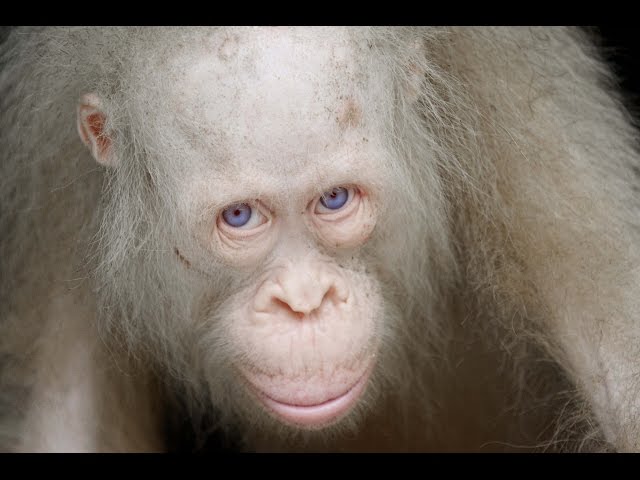Albinism, a genetic condition resulting in a lack of melanin pigment, manifests in various species across the animal kingdom, including monkeys. Albino monkeys, with their ethereal appearance and unique biological characteristics, captivate both scientists and enthusiasts alike. In this article, we delve into the fascinating realm of albino monkeys, exploring their biology, behavior, conservation status, and the cultural significance they hold.
Unveiling the Albino Phenomenon
Albinism occurs due to a genetic mutation that inhibits the production of melanin, the pigment responsible for skin, hair, and eye coloration. In albino monkeys, this mutation results in a striking lack of pigmentation, rendering their fur and skin pale or white and their eyes a distinctive pink or blue hue. Unlike their pigmented counterparts, albino monkeys lack the natural camouflage crucial for survival in their respective habitats, making them more vulnerable to predation and environmental factors.
Species Diversity and Distribution
Albinism is observed across various species of monkeys, including but not limited to macaques, vervets, and marmosets. Each species may exhibit unique characteristics and behaviors influenced by their environment and genetic makeup. Albino monkeys can be found in diverse habitats ranging from tropical rainforests to savannas, though their rarity often makes them elusive sightings for researchers and wildlife enthusiasts alike.
The Curious Case of Social Dynamics
Observations of albino monkeys within their social groups reveal intriguing dynamics shaped by their distinctive appearance. In some cases, albino individuals may face exclusion or discrimination from their pigmented counterparts due to their conspicuousness, while in others, they may hold a revered or mystical status within their communities. Understanding the social implications of albinism among monkeys provides valuable insights into primate behavior and cognition.
Conservation Challenges and Efforts
Albino monkeys face numerous challenges in the wild, including heightened predation risk, reduced reproductive success, and habitat loss due to human activities such as deforestation and urbanization. Additionally, their rarity makes them prime targets for illegal wildlife trade and exploitation. Conservation efforts aimed at protecting albino monkeys and their habitats are therefore crucial for ensuring their long-term survival. These efforts encompass habitat preservation, anti-poaching measures, community education, and research initiatives focused on understanding the genetic basis of albinism in monkeys.
Cultural Significance and Symbolism
Albino monkeys have captured the imagination of cultures around the world, often featuring in folklore, mythology, and artistic representations. In some societies, albino animals are regarded as symbols of purity, wisdom, or divine favor, while in others, they are viewed with superstition or fear. Exploring the cultural significance of albino monkeys sheds light on the complex interplay between human perceptions, beliefs, and the natural world.
Ethical Considerations in Captivity
Albino monkeys are occasionally kept in captivity, whether in zoos, research facilities, or private collections. While captive environments can provide opportunities for scientific study and public education, they also raise ethical concerns regarding animal welfare, conservation priorities, and the perpetuation of albino traits through breeding programs. Balancing the benefits and drawbacks of captivity requires careful consideration of both human and non-human interests.
Conclusion: Embracing Diversity in Nature
Albino monkeys embody the remarkable diversity of life on our planet, serving as both a testament to genetic variation and a reminder of the challenges faced by individuals with unique traits. By studying albino monkeys, we gain valuable insights into evolutionary processes, social dynamics, and the intricate relationships between humans and wildlife. As stewards of the natural world, it is our responsibility to protect and preserve these enigmatic creatures for generations to come, ensuring that they continue to inspire wonder and fascination in the hearts of all who encounter them.

